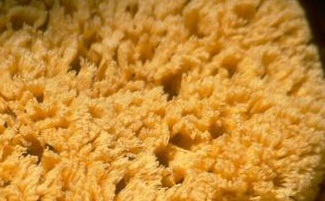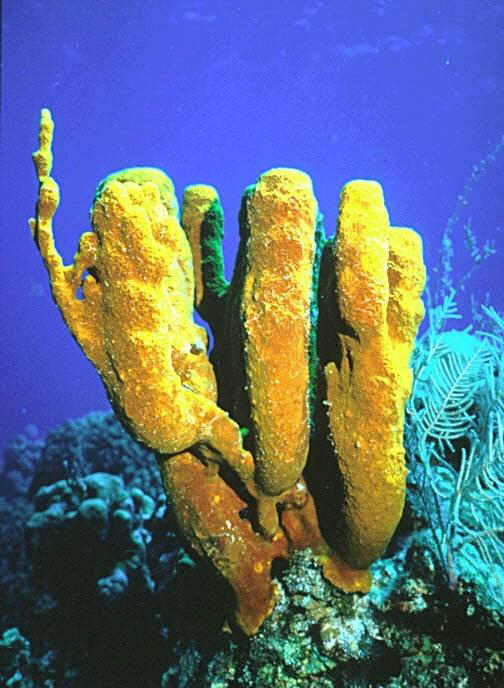|
PORIFERA (sponge)
 There are many
different types of sponges. Make sure your students realize that most of the
sponges that they use at home or at school are synthetic, but at one time
natural sponges were used for that purpose. All sponges are not made of the
same material that the sample in your kit is make of (called spongin). Some
sponges make a skeleton of silica (glass) or calcium carbonate (shell
material). Many sponges are irregular in shape, massive, and encrusting. They
can be as big as a bath tub or as small as a bean. Sponges are considered
primitive invertebrates. They do not have organs, they There are many
different types of sponges. Make sure your students realize that most of the
sponges that they use at home or at school are synthetic, but at one time
natural sponges were used for that purpose. All sponges are not made of the
same material that the sample in your kit is make of (called spongin). Some
sponges make a skeleton of silica (glass) or calcium carbonate (shell
material). Many sponges are irregular in shape, massive, and encrusting. They
can be as big as a bath tub or as small as a bean. Sponges are considered
primitive invertebrates. They do not have organs, they  are
basically a conglomeration of cells. Notice the holes on your specimen. This
is where water comes into the sponge and flagellated cells along the lining,
filters debris that is later used for food. The water that has been filtered
leaves the sponge by one of the holes. Other cells in the sponge prepare the
food for use by the sponge. are
basically a conglomeration of cells. Notice the holes on your specimen. This
is where water comes into the sponge and flagellated cells along the lining,
filters debris that is later used for food. The water that has been filtered
leaves the sponge by one of the holes. Other cells in the sponge prepare the
food for use by the sponge.
KEY POINTS:
- many cells
- mainly marine
- without organs (i.e. lungs, heart, etc)
- body full of pores, canals and chambers
- water flows through openings by action of numerous flagellated
cells, that line the internal cavity
- lives in medium to deep water
|
|